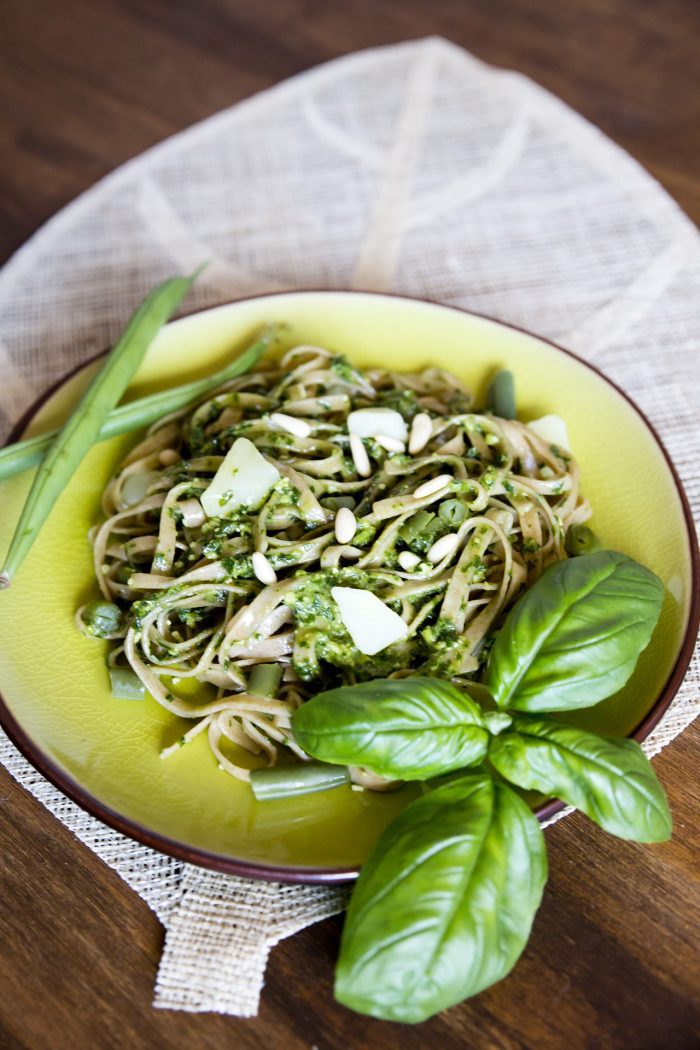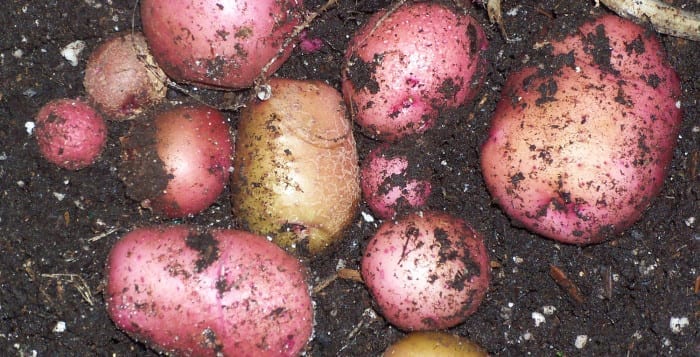By Barbara Beltrami
Now is the time to capitalize on summer’s bounty of veggies and herbs, and what better way to do that than to use them in pasta sauces. This is the time of year for a Pasta Norma with tomatoes, eggplant and ricotta salata, a pasta with pesto, potatoes and green beans or pasta with grilled veggies. Any of these can be a first course served in smallish portions, a light summer entree or accompaniment to whatever is on the barbecue. Don’t skimp on the veggies and don’t hesitate to change up any of these recipes to accommodate the day’s harvest from your or your neighbor’s garden or the farm stand.
Pasta Norma
YIELD: Makes 4 servings
INGREDIENTS:
1/4 cup extra virgin olive oil
1 garlic clove
1 1/2 pounds ripe tomatoes, diced
Salt and freshly ground pepper to taste
1 pound eggplant, peeled and diced
1 pound fusilli or cavatappi
1 large sprig fresh basil, leaves chopped
6 ounces ricotta salata, diced
DIRECTIONS:
In a large skillet over medium high heat, warm oil and whole garlic clove about one minute. As soon as the garlic begins to release its aroma, add tomatoes, salt and pepper; cook about 10 minutes, until liquid from tomatoes has evaporated, then add eggplant to pan, cover and cook about 15 minutes over medium heat, until eggplant is tender. Meanwhile cook pasta according to package directions; when pasta is almost ready, add basil to tomatoes and eggplant and stir; remove and discard garlic. Drain pasta and transfer to serving bowl; toss with sauce and ricotta salata and serve with a slightly chilled nero d’avola wine.
Pasta with Pesto, Potatoes, Green Beans
YIELD: Makes 4 to 6 servings
INGREDIENTS:
2 cups basil leaves, firmly packed
1/3 cup pignoli nuts
Salt and freshly ground pepper to taste
2 garlic cloves, crushed
1/2 – 2/3 cup extra virgin olive oil
1/2 cup grated Parmigiano Reggiano cheese
1 pound linguine or fettuccine
1/2 pound potatoes, peeled, cooked, diced
1/4 pound fresh green beans, cut into 1” lengths and cooked until tender
DIRECTIONS:
In bowl of electric food processor combine basil, pignoli nuts, salt, pepper and garlic until mixture achieves a coarse grainy texture; with motor running add oil in a slow steady stream, then add cheese and process just enough to mix thoroughly. Cook pasta according to manufacturer’s directions; drain and reserve about half a cup — one cup of the cooking water; transfer pasta to serving bowl, add pesto, then add reserved water, a little at a time, until sauce is a thick liquid but not runny, toss to thoroughly coat, then add potatoes and beans and toss again before serving.
Ziti with Grilled Vegetables
YIELD: Makes 4 servings
INGREDIENTS:
2 medium zucchini cut lengthwise into thirds
2 bell peppers, seeded, cored, quartered
1 large red or Vidalia onion, cut crosswise into half inch slices
8-10 plum tomatoes, halved
Olive oil for brushing
Salt and freshly ground pepper to taste
1/2 pound ziti or penne
1/4 cup extra virgin olive oil
1/2 cup minced mixed fresh basil, oregano and thyme
4 ounces crumbled goat cheese or feta cheese
DIRECTIONS:
On a large rimmed baking sheet arrange the zucchini, peppers, onion and tomatoes; brush on both sides with olive oil, then season with salt and pepper. Preheat grill to medium, then arrange veggies on it, cover and cook, turning once, until tender and lightly browned, about 5 minutes per side; cut veggies into bite-size pieces and set aside to keep warm. Cook pasta according to manufacturer’s directions, drain and place in large serving bowl; toss with veggies and herbs, then sprinkle with crumbled cheese and toss lightly before serving.







